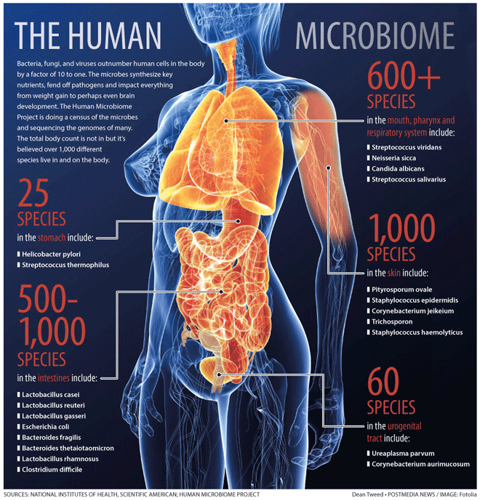The Microbiome
The microbiome is a complex topic that could be explained in detail in an extensive paper. However, this newsletter issue seeks to provide a brief but solid understanding of the microbiome using simple applications to ecology.
One of the first things taught in entry-level ecology classes is what an ecosystem is. An ecosystem is an environment in which flora (plants) and fauna (animals) interact. An ecosystem that expands over a large area is called a “biome.”
Believe it or not, we have small “ecosystems” in our bodies containing different kinds of bacteria. The microbiome is the assemblage of microorganisms living on and within our body, such as our gut. These microorganisms include fungi, bacteria, and viruses. In terms of nutrition, the gut microbiome is of particular focus to us.
It is important to point out that the gut microbiome serves to protect against pathogens (bad bacteria), and to promote proper uptake of nutrients. Significant changes in an individual’s microbiome might lead to disease, such as Inflammatory Bowel Disease, and many other diseases such as diabetes, obesity, and cardiovascular disease. On the contrary, certain types of “good bacteria” and appropriate diet changes can lead to significant improvement in health for those with microbiome-related conditions.

References
Wang, Y., Kasper, L.H. The role of microbiome in central nervous system disorders. Brain Behav. Immun. (2014), http:// dx.doi.org/10.1016/j.bbi.2013.12.015
Hardin, Joan R. "How the Gut Microbiome Influences the Brain - and Vice Versa - Allergies & Your Gut." Allergies & Your Gut. Joan Rothchild Hardin, 09 Apr. 2015. Web. 05 Dec. 2016.